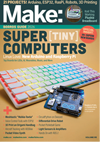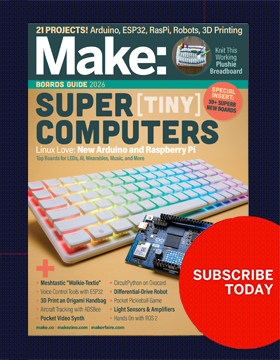Music
Take your creations beyond the workshop and onto the stage with diy music instruments! Let us show you how these creations range from simple, basic setups that produce beautiful sounds to more complex projects that require a greater level of engineering knowledge. With these tutorials and examples, we’ll guide you on this journey to make your own musical instrument for experimental, artistic or everyday use – so whether you’re starting out new or a seasoned sound creator, come explore the wonderful world of making your own music.
Build your own Japanese construction equipment paper toys
 Build your own Japanese construction equipment paper toys from SAKAI HEAVY INDUSTRIES, LTD – My fav is the Macadam Roller -which is mainly used for rolling compaction in early stage and finishing- is the machine to secure the uniform compaction and the flatness of base course, asphalt mixture, etc. Link.
Build your own Japanese construction equipment paper toys from SAKAI HEAVY INDUSTRIES, LTD – My fav is the Macadam Roller -which is mainly used for rolling compaction in early stage and finishing- is the machine to secure the uniform compaction and the flatness of base course, asphalt mixture, etc. Link.
The Future of The Body: The Soundtrack
 Popular Science commissioned contributing troubadour, Jonathan Coulton, to write and record a soundtrack to their current Future of the Body issue. Each of the five songs he has crafted accompanies a feature article in this issue and, using clever lyrics, catchy hooks and secret harmonic frequencies, unlocks powerful regions of your brain not normally used in the reading of magazines. There are five songs, each inspired by an article, and CD cover art for available for download… Link.
Popular Science commissioned contributing troubadour, Jonathan Coulton, to write and record a soundtrack to their current Future of the Body issue. Each of the five songs he has crafted accompanies a feature article in this issue and, using clever lyrics, catchy hooks and secret harmonic frequencies, unlocks powerful regions of your brain not normally used in the reading of magazines. There are five songs, each inspired by an article, and CD cover art for available for download… Link.
HOW TO serve your iTunes library to your Sony PSP using WiFi internet
 Good HOW TO for Mac and PSP 2.0 firmware owners who use iTunes. “Wouldn’t it be great if I could just delete some songs and and add new songs from my iTunes library, wherever I was using the WiFi internet connection?” It can be done, for a small cost (about $22 U.S.) Here’s how- Link.
Good HOW TO for Mac and PSP 2.0 firmware owners who use iTunes. “Wouldn’t it be great if I could just delete some songs and and add new songs from my iTunes library, wherever I was using the WiFi internet connection?” It can be done, for a small cost (about $22 U.S.) Here’s how- Link.
Tube amps!
 MetaFilter has a round up and a great discussion on tube amps. Some cool little tube amps. The world’s smallest production tube amp and world’s Smallest Vacuum Tube hi-fi stereo amplifier. These are too cool. Link.
MetaFilter has a round up and a great discussion on tube amps. Some cool little tube amps. The world’s smallest production tube amp and world’s Smallest Vacuum Tube hi-fi stereo amplifier. These are too cool. Link.
Modding iTunes…
 ...organize classical music such that the composer appears in the artist field and the artist/ensemble appears somewhere else. The obvious choice would be to use the now vacated composer slot, and I do exactly that. I’ve modified iTunes to support this new paradigm and am VERY happy with the change. The final result looks like this… Link.
...organize classical music such that the composer appears in the artist field and the artist/ensemble appears somewhere else. The obvious choice would be to use the now vacated composer slot, and I do exactly that. I’ve modified iTunes to support this new paradigm and am VERY happy with the change. The final result looks like this… Link.
HOW TO Make Your Own $6 Microphone Pop-Filter
 This article will show you how to make your own microphone pop-filter. A pop-filter is a small screen that goes between a microphone and your mouth to prevent sharp popping sounds (known as plosives) like “P” and “B” words from overloading the mic level and distorting. Commercially available pop-filters are expensive and can often cost 20 dollars or more. The pop-filter you can build here will cost less than $6 dollars. Link.
This article will show you how to make your own microphone pop-filter. A pop-filter is a small screen that goes between a microphone and your mouth to prevent sharp popping sounds (known as plosives) like “P” and “B” words from overloading the mic level and distorting. Commercially available pop-filters are expensive and can often cost 20 dollars or more. The pop-filter you can build here will cost less than $6 dollars. Link.







